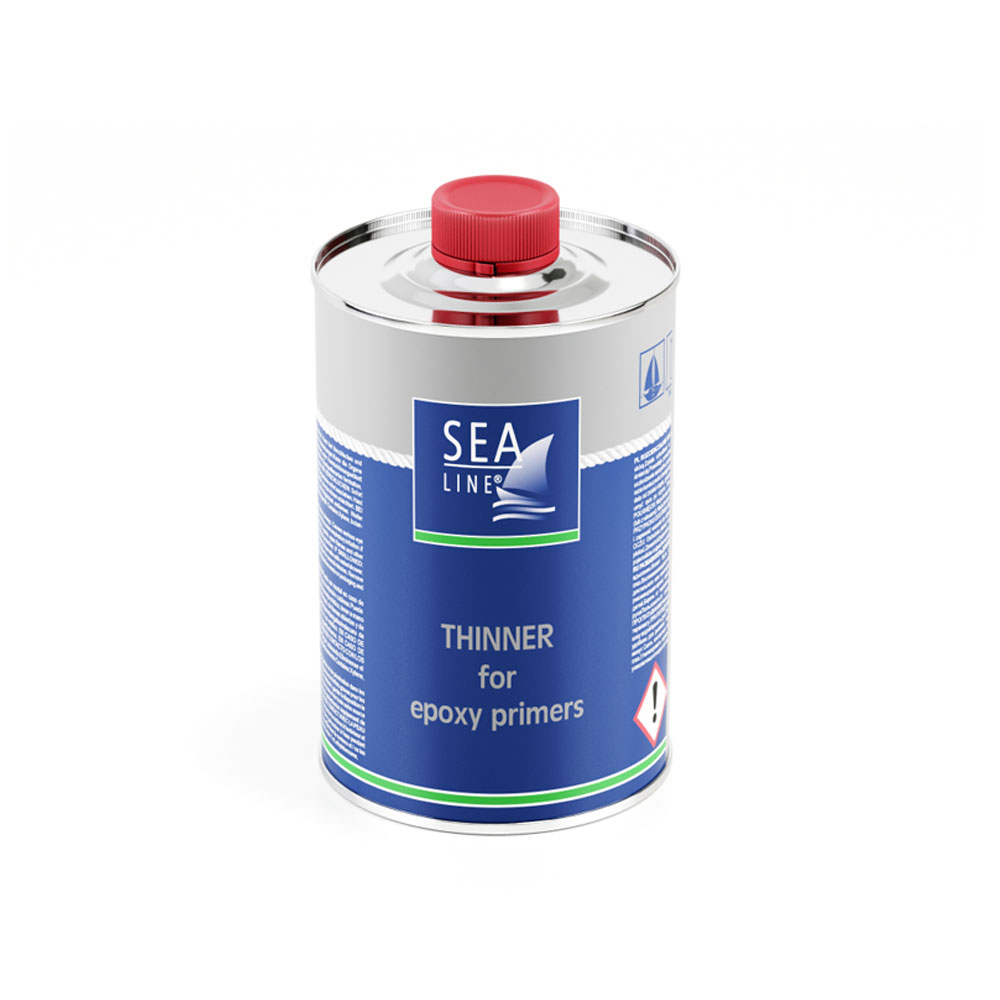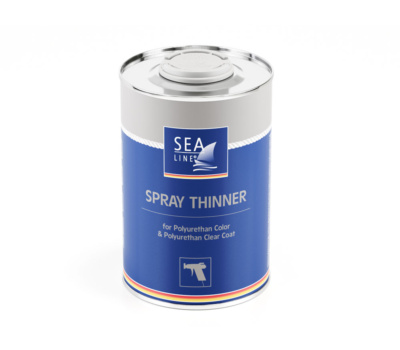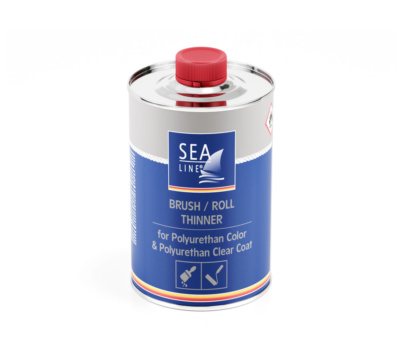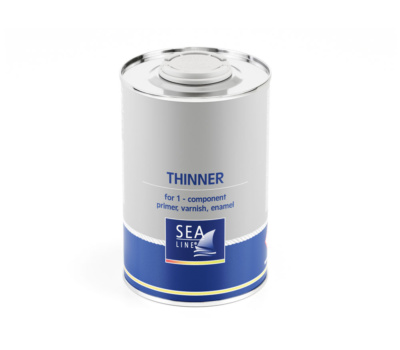Thinner for all Sea-Line epoxy primers. It is very important to use paint thinners, which provide the appropriate parameters of paint – flow, pot life, time of drying.
| Capacity | Code |
|---|---|
| 250 ml | 11278 |
| 1 l | 5138 |
| 5 l | 1818 |

Using the appropriate thinner recommended by the manufacturer is not just about ensuring the correct technical parameters during application. The use of a thinner containing different chemical compounds will fundamentally change the structure of chemical bonds, thereby altering the final effect obtained by using Sea-Line® epoxy primers.
Thinner for epoxy primers is a mixture of carefully selected solvents. The product intended for thinning Sea-Line® epoxy primers allows obtaining a product with strictly defined parameters. It ensures their proper application and drying. Detailed instructions on the proportions for using the thinner are provided in the technical data sheets of the respective products.
| Epoxy Lightprimer 5:1 | Brush / Roll | 5-25% |
| Spray gun | 5-50% | |
| Epoxy Antyosmotic HS 3:2 | Brush / Roll | 0-5% |
| Spray gun | Not recommended | |
| Epoxy Anticorrosiv 4:1 | Brush / Roll | 5-25% |
| Spray gun | 5-50% | |
| Epoxy Woodprimer 10:4 | Brush / Roll | 0-5% |
| Spray gun | 20-30% |

Spray thinner for polyurethane color and high gloss polyurethane clear coat. Thinner for the application

Brush and roll thinner for polyurethane color and high gloss polyurethane clear coat. Thinner for

It is very important to use paint thinners, which provide the appropriate parameters of paint
Do not add more hardener, because after the base has cured, the remaining hardener will react with subsequent layers, which will be applied to the surface and cause defects. For the product to work properly, please follow the proportions given by the manufacturer.
If the scratches are not deep, then we can renew the scratched side by polishing with Sea-Line polishing pastes. Above the waterline, when the scratches are not deep, the surface can be repaired with a DRY FAST gel coat filler. Deep scratches should be filled with epoxy filler (selected depending on the requirements of the scratched surface), painted with a primer and then painted with topcoat.